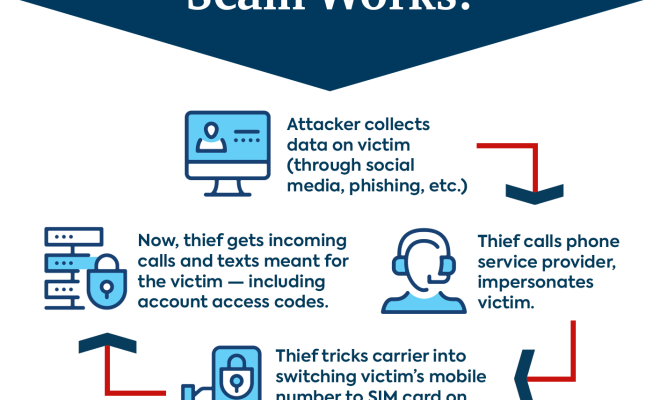What Is SIM Card Swapping? 5 Tips to Protect Yourself From This Scam

SIM card swapping is an identity theft technique that involves taking over a victim’s mobile phone number and using it to gain access to sensitive accounts, such as online banking, social media, and email. This scam has become increasingly common in recent years, and it can cause significant financial and reputational damage to victims. In this article, we will discuss what SIM card swapping is and five tips to protect yourself from this scam.
What is SIM card swapping?
SIM card swapping is a process in which scammers convince a mobile phone carrier to transfer a victim’s mobile phone number to a SIM card in their possession. They do this by posing as the victim and providing a convincing enough reason to convince the carrier to transfer the number. Once the scammers have access to the victim’s mobile phone number, they can use it to receive codes for online accounts linked to the number.
Five tips to protect yourself from this scam
1. Use two-factor authentication with a physical security key.
Two-factor authentication requires two forms of verification to access an account. For online accounts that support two-factor authentication, using a physical security key adds an extra layer of security as it is much harder for scammers to gain access to. A physical security key is a small device that you plug into your computer or mobile phone to confirm your identity.
2. Enable a PIN or password for your mobile phone account.
Enabling a PIN or password on your mobile phone account can help prevent scammers from convincing mobile phone carriers to transfer your number to a different SIM card.
3. Be wary of phishing attacks.
Scammers may attempt to obtain your personal information through phishing attacks, which involve sending you bogus emails or text messages. They may use information they have already acquired to make the message seem convincing. Be cautious about clicking on links in messages from unknown senders, and avoid providing personal information via email or text.
4. Monitor your accounts closely.
Regularly checking your accounts for unusual activity can help you detect SIM card swapping and other types of fraud. If you notice any unusual activity, report it to the relevant authority or organization immediately.
5. Avoid sharing personal information.
Protect your identity by being careful about the information you share online. Avoid posting information that could be used to guess your security questions, and be cautious about sharing personal details, such as your date of birth or mother’s maiden name.
Conclusion
SIM card swapping is a serious threat to individuals’ identity and financial health. By using two-factor authentication with a physical security key, enabling a PIN or password for your mobile phone account, being wary of phishing attacks, monitoring your accounts closely, and avoiding sharing personal information, you can protect yourself from this scam. Remember, prevention is always better than cure.






